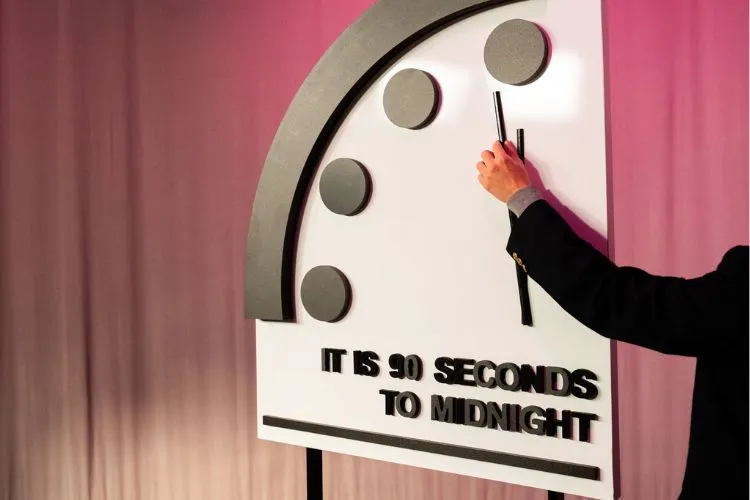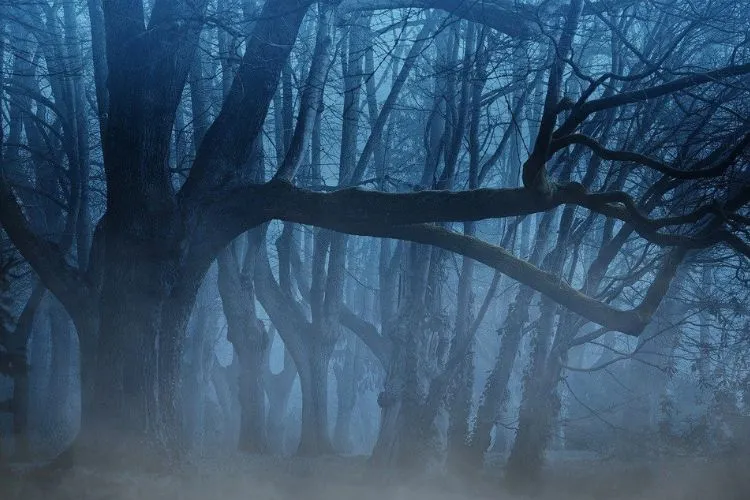In the heart of Seattle during the 1950s and ’60s, the ominous specter of nuclear annihilation loomed large over the everyday lives of its residents. This was a time when the city, known for housing Boeing – the manufacturer of B-52 bombers and Minuteman missiles – was deemed the second most likely target in the event of a nuclear war.
The drills conducted in schools for various catastrophes, including earthquakes and nuclear attacks, etched a deep-seated awareness of the nuclear threat in the minds of the young.
This generational consciousness was not just confined to the drills but extended into the psyche of those who grew up under the shadow of the Cold War, wondering if a trek into the Cascades or the Olympic Mountains might end in emerging to a world reduced to ashes.
The Doomsday Clock: A Metaphorical Timepiece of Apocalypse
This historical backdrop sets the stage for a reflection on the current status of the Doomsday Clock, a metaphorical timepiece introduced in 1947 by the Bulletin of the Atomic Scientists to symbolize the proximity of humanity to its own destruction.
Initially set to count down 15 minutes to midnight, representing the “stroke of doom,” the clock has been adjusted over the years in response to global events, including the advent of climate change and pandemics alongside the perennial threat of nuclear war.

In a stark reminder of the fragility of global peace and security, the clock was set to 90 seconds to midnight a year ago, following Russia’s invasion of Ukraine and the subsequent nuclear saber-rattling. This setting marks the closest humanity has purportedly come to its own demise, according to the Bulletin’s assessment.
Despite a perceived reduction in the nuclear threat in Ukraine, the clock’s hands remain fixed, a grim testament to the ongoing challenges facing the world.
“Oppenheimer” and the Legacy of Nuclear Power
The recent decision by the Bulletin of the Atomic Scientists to maintain the Doomsday Clock at 90 seconds to midnight coincides intriguingly with the acclaim garnered by “Oppenheimer,” Christopher Nolan’s biographical film on J. Robert Oppenheimer, the so-called “father of the atomic bomb.”
The film’s exploration of Oppenheimer’s legacy and Nolan’s portrayal of him as “the most important human in history” underscores the dual-edged sword of technological advancement: the capacity to end all wars or to lead humanity to its annihilation.
The Fermi Paradox and the Great Silence
This existential dilemma is further compounded by the Fermi Paradox, which questions why, in a universe so vast, humanity appears to be in solitude. The paradox, named after physicist Enrico Fermi, points to the eerie silence from the cosmos despite the high probability of alien life.
This Great Silence raises profound questions about the fate of intelligent civilizations and whether humanity’s intelligence will ultimately lead to its survival or its downfall.
The Great Filter and the Dark Forest Theory
Astrophysicists and economists alike have pondered over the “Great Filter,” a theoretical barrier that prevents civilizations from reaching interstellar capabilities, suggesting that humanity’s survival may hang in a delicate balance.
The idea that intelligent life forms might self-destruct before achieving the ability to colonize the galaxy presents a chilling reminder of the potential self-imposed limits on humanity’s future.

Moreover, the concept of the “Dark Forest,” inspired by the science fiction novel by Liu Cixin, posits a universe where only the most aggressive and paranoid civilizations survive, advocating for silence as a survival strategy against potential extraterrestrial threats.
This metaphorical dark forest serves as a cautionary tale for humanity’s ventures into the cosmos, suggesting that our signals into space could one day invite unwelcome attention from a technologically superior civilization.
A Glimmer of Hope Amidst the Gloom
Despite these grim prospects, there exists a thread of hope. The resilience of life, as evidenced by the survival of microbes in extreme conditions, suggests that life on Earth will continue to evolve and adapt, regardless of humanity’s fate.
The Doomsday Clock, while a stark reminder of the perils we face, also serves as a call to action. It emphasizes that it is not too late for humanity to alter its course, to foster cooperation and stewardship of our planet in order to secure a future where humans can thrive and possibly inherit the galaxy.
As the world grapples with these existential threats, the words of physicist Daniel Holz resonate deeply, highlighting the complexity of assessing what constitutes good or bad news for humanity’s future.
The challenges may be daunting, but they also present an opportunity for humanity to come together in pursuit of a common goal: survival. The Doomsday Clock ticks on, but so does the chance for change.


